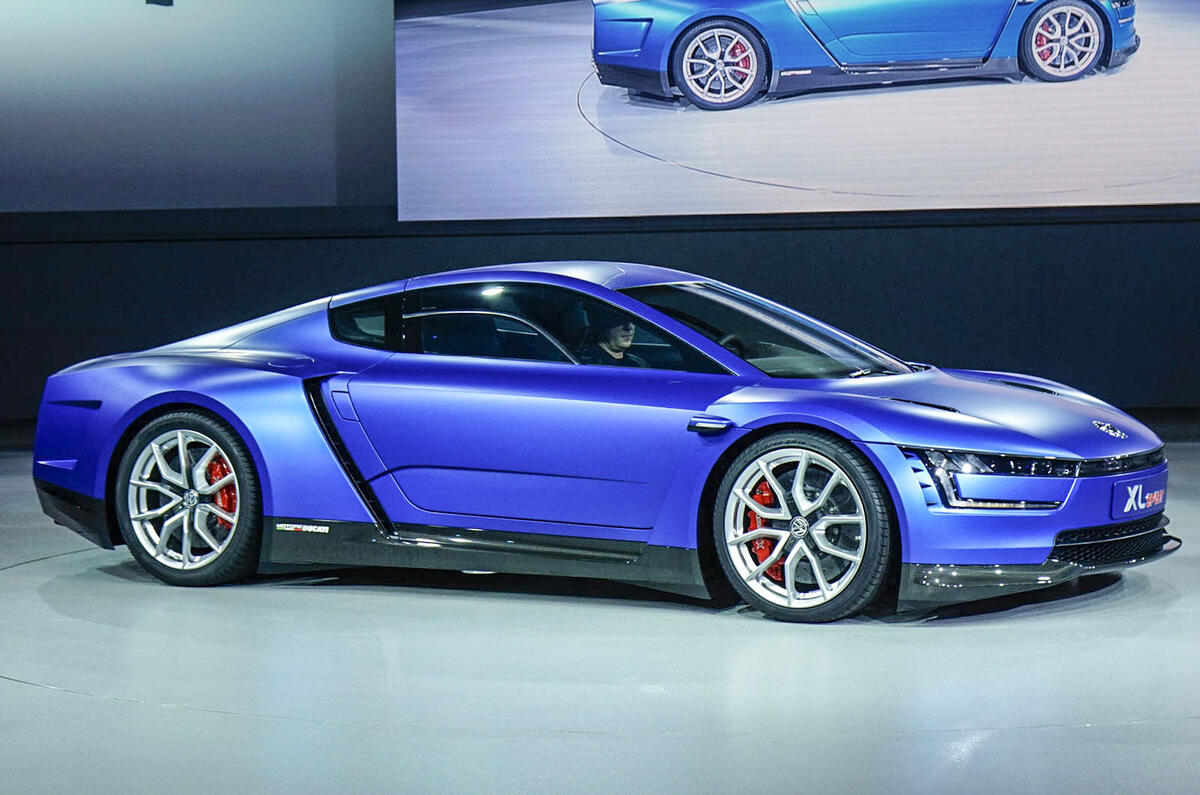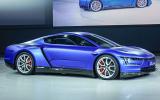Volkswagen has revealed a high-performance Ducati-engined version of the XL1, named the XL Sport, at the Paris motor show.
The mid-engined, rear-wheel-drive XL Sport concept, which is the 200 millionth car produced by Volkswagen, is powered by the Italian motorcycle company’s V-twin engine, which is the world's most powerful two-cylinder motorcycle engine.
Ducati is part of the Volkswagen Group, having been bought by Audi in 2012.
The engine is derived from that found in the 1199 Panigale Superleggera. Installed in the sleek XL Sport, it produces 197bhp, has a top speed of more than 167mph and revs to a maximum of 11,000rpm.
This engine, together with a seven-speed DSG transmission, launches the sports car from 0-62mph in 5.7 seconds and revs up to 11,000rpm.
Although the car bears a close resemblance to the super-frugal XL1, some major design aspects have been developed completely from scratch. The XL Sport weighs 890kg and has a drag coefficient of 0.258. Volkswagen claims these factors combine to make it the fastest car in the world for its power output.
For example, the XL Sport has a number of special aerodynamic tweaks including special air curtains, wheel arch air outlets, an optimised underbody, a diffuser that reduces aerodynamic lift and adaptive exhaust heat vents integrated in the rear lid.
The concept car is slightly longer and wider than the XL1 with a length of 4291mm, width of 1847mm and height of 1152mm. It has a 2424mm wheelbase, longer than the XL1, significantly wider wings and larger wheels.
The extendible rear spoiler is powered by the same apparatus unit as in the Lamborghini Aventador. It also has adaptive waste heat vents incorporated in the rear hatch – the louvres opens and closes automatically as required to conduct excess engine heat away. The air supply for cooling the Ducati engine is via vents in the rear wings.
It has a carbonfibre tub like XL1, with steel space frames at either end to hold the suspension. They are supplementary to the carbonfibre tub and aluminium crash structures. The suspension consists of a double wishbone front axle with the dampers connected below in a pull-rod configuration, and a double wishbone rear axle with the dampers connected above in a push rod configuration.
The tyres are 205/40 R18 at the front and 265/35 R18 and the rear, and the wheels are made from forged magnesium, which brings a total weight reduction of 23.9kg compared with aluminium wheels.










































































Add your comment
looks great
If it wasn't so sad it would be funny...
Not Sure